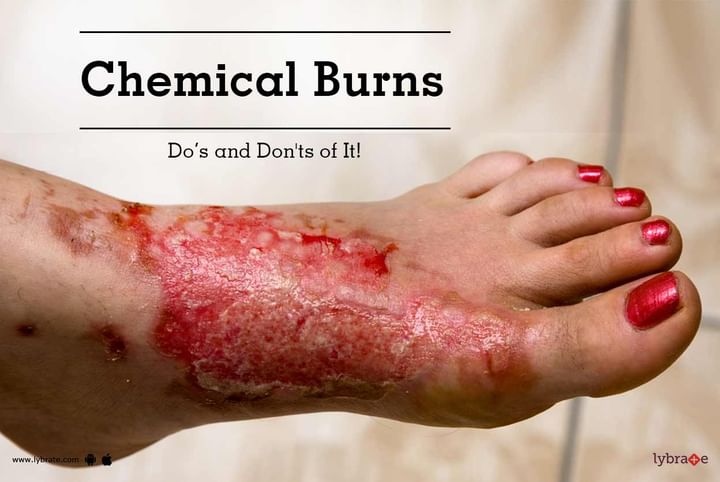Chemical Burns - Do's and Don'ts of It!
A chemical burn can occur owing to a number of substances, for instance, if the skin comes in contact with strong acids, bases, irritants, gasoline, paint thinner and drain cleaners then it react with your skin. Chemical burns are also termed as caustic burns. The symptoms usually depend on the intensity of a burn, which include redness, irritation, numbness, pain, the skin turning black and dead or even vision loss, if the chemicals come in contact with the eyes.
What are the Do’s and Don’ts?
-
Do away with those chemicals, which have caused the burn or wipe off the dry chemicals. It is safe to use towels or put on gloves for this work.
-
Remove jewelry or any contaminated clothing to avoid further burning and inflammation of the skin.
-
Rinse off the affected area immediately with cold water.
-
Loosely wrap the area with sterile gauze or a bandage.
-
If required, you can even opt for pain relievers such as naproxen sodium, ibuprofen or acetaminophen.
-
Consider taking a tetanus injection, but at the same time, ensure that your booster is up-to-date.
-
Refrain from applying an antibiotic ointment over the burnt area or neutralizing it with an alkali or acid. This may aggravate the burn.
When should you seek an emergency care?
-
When the person exhibits sign of shock such as shallow breathing, pale complexion or is experiencing bouts of fainting.
-
When the chemical burn pierces through the upper layer of the skin, occupying an area of above 3 inches in diameter.
- When the chemical burn has spread to the buttocks, groin, face, feet, hands, eyes or even the limb.
In case you have a concern or query you can always consult an expert & get answers to your questions!



+1.svg)
